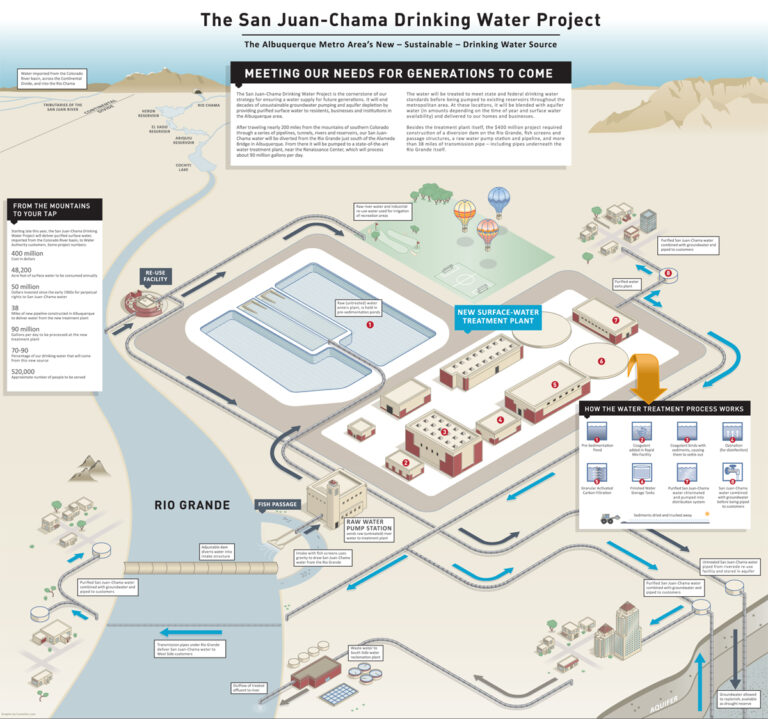Pour Me A River
Albuquerque Drinks From The Rio Grande


Dozens of miles of pipeline were laid throughout Albuquerque to accommodate the new drinking water system.
Albuquerque Bernalillo County Water Utility Authority




